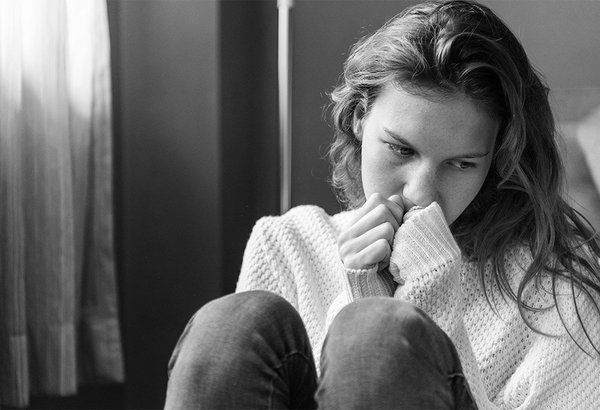Winter is not quite here, but you already may be experiencing the symptoms of seasonal affective disorder.
Many people start to feel down as soon as the days get shorter and they start waking up and coming home from work in the dark.
- RELATED STORIES
- Seasonal affective disorder also impacts people during the summer
- Cannabis use could help mitigate depression, suicidal thoughts among those with PTSD, study shows
- Lindsey Vonn opens up about her depression at millennial health forum
Seasonal affective disorder, or SAD, is "a type of depression that is related to changes in seasons" and one that "begins and ends at the same times every year," according to the Mayo Clinic. Symptoms generally begin in the fall and continue through the winter months, causing sluggishness and moodiness.
SAD is not always easy to distinguish from other types of depression or other mental health issues. Symptoms include feeling depressed for most of the day, a lack of interest in things you used to enjoy, fatigue and low energy. People with SAD also can struggle to sleep at night and to concentrate during the day.
People who get SAD in the fall and winter months often experience oversleeping, appetite changes and weight gain.
Seasonal affective disorder, or SAD, affects about 10 million Americans, according to Psychology Today. Why are some people more susceptible than others?
Several factors can play a role, according to the Mayo Clinic. They include a person's circadian rhythm, or biological clock; their serotonin levels, which help stabilize mood; and their melatonin levels, which regulate sleep cycles.
SAD also can run in families, and people are at greater risk if they have already been diagnosed with major depression or bipolar disorder. It is diagnosed through a series of physical and psychological evaluations as well as blood work.
"There's definitely evidence that the decreased total amount of light exposure – called the photo period – is an important factor in triggering depression," Dr. James Murrough, director of the Depression and Anxiety Center for Discovery and Treatment at Mount Sinai, told the New York Daily News.
Murrough added that some people also experience SAD beyond the fall and winter months.
Here are some ways to help reduce your symptoms (Sources include: Cleveland Clinic, Mayo Clinic and National Sleep Foundation):
- Get regular exercise. Psychologist Scott Bea told the Cleveland Clinic that "moving your body will compete with that tendency to be sluggish and can produce good brain chemistry."
- Don't avoid social situations. Make yourself get out of your own head for awhile.
- Practice light therapy. Research shows that daily light therapy, usually administered by a light box containing fluorescent light tubes covered with a plastic screen, can improve mood in 60-80% of people with SAD. However, Bea warns that light therapy is not safe for people with diabetes or retinopathies, or those who take certain medications, because it increases the risk of retinal damage.
- Eat a healthy, balanced diet every day.
- Practice meditation, yoga or other types of relaxation strategies
- Talk to your doctor about the benefits of medication or psychotherapy.
See your doctor for an evaluation if your symptoms last for longer than two weeks.


